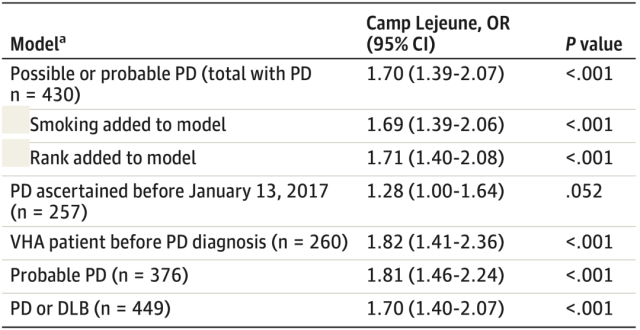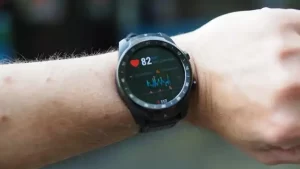Trichlorethylene in carpet cleaners linked to 70% increased risk of Parkinson’s disease
- Statins Lower Blood Lipids: How Long is a Course?
- Warning: Smartwatch Blood Sugar Measurement Deemed Dangerous
- Mifepristone: A Safe and Effective Abortion Option Amidst Controversy
- Asbestos Detected in Buildings Damaged in Ukraine: Analyzed by Japanese Company
- New Ocrevus Subcutaneous Injection Therapy Shows Promising Results in Multiple Sclerosis Treatmen
- Dutch Man Infected with COVID-19 for 613 Days Dies: Accumulating Over 50 Virus Mutations
Trichlorethylene in carpet cleaners linked to 70% increased risk of Parkinson’s disease
- Red Yeast Rice Scare Grips Japan: Over 114 Hospitalized and 5 Deaths
- Long COVID Brain Fog: Blood-Brain Barrier Damage and Persistent Inflammation
- FDA has mandated a top-level black box warning for all marketed CAR-T therapies
- Can people with high blood pressure eat peanuts?
- What is the difference between dopamine and dobutamine?
- How long can the patient live after heart stent surgery?
Trichlorethylene in carpet cleaners linked to 70% increased risk of Parkinson’s disease.
Parkinson’s disease has overtaken Alzheimer’s disease as the fastest growing neurodegenerative disease in the world.
Scientists have been looking for risk factors that push up the onset of Parkinson’s disease.
Recently, a research team led by Samuel M. Goldman of the University of California, San Francisco , published a major research result in the famous journal JAMA Neurology , confirming that the widespread pollutant trichlorethylene (TCE) is a strong risk factor for Parkinson’s disease [1 ].
Based on data from more than 150,000 U.S. military veterans, they found that TCE-exposed veterans had a 70 percent higher risk of developing Parkinson’s disease compared with non-TCE-exposed veterans . To the best of our knowledge, this is the first large-scale prospective study in this field .
“Science” magazine commented that this study provides the most convincing evidence so far that “trichlorethylene increases the risk of Parkinson’s disease” [2].

Screenshot of paper homepage
Trichlorethylene was first synthesized in 1864 and commercial production began in the 1920s.
Due to its good fat solubility and volatility, trichlorethylene was widely used in industry and daily life in the 20th century, such as dry cleaning solvents, carpet cleaners, stain removers, and surgical anesthetics, and even used in decaffeinated coffee produce .
Today, trichlorethylene is still an important degreasing agent and industrial raw material.
In recent years, more and more studies have found that trichlorethylene is associated with miscarriage, neural tube defects, congenital heart disease, autoimmune diseases and cancer [3].
Dr. Goldman, who studies neurodegenerative diseases such as Parkinson’s disease, noticed that some small-scale or case studies have found that trichlorethylene is related to Parkinson’s disease [4]; in addition, studies based on animal models have also found that trichlorethylene can Induces pathological features of Parkinson’s disease [5,6].
The above studies indicate that there may be a causal relationship between trichlorethylene and Parkinson’s disease, but there is still a lack of high-quality population cohort studies.
In order to find stronger epidemiological evidence, Goldman turned his attention to a pollution event in the United States.
Between approximately 1953 and 1987, the drinking water of residents at Marine Corps Camp Lejeune in North Carolina was contaminated with volatile organic compounds such as trichlorethylene, resulting in one of the largest pollution episodes in recorded U.S. history .
According to statistics, during the most serious period of pollution (1975-1985), the estimated monthly median of trichlorethylene was 366 micrograms per liter, more than 70 times the maximum pollution level at that time.
Goldman’s team examined all service members with Parkinson’s disease living between 1975 and 1985 at Camp Lejeune, North Carolina (contaminated water, n = 172,128) or Camp Pendleton, California (unpolluted water, n = 168,361) risks of.
After a series of admission criteria, 158,122 soldiers were finally included in this study, including 84,824 soldiers from Lejeune Camp (average age 59.6 years old, who have been stationed at Lejeune Camp for at least three months) , and 73,298 soldiers from Pendleton Camp (average age 59.8 years old). , the baseline demographic characteristics of the two groups of servicemen were similar.
Collect and analyze the data of all included soldiers from January 1, 1997 to February 17, 2021.
During the entire follow-up period, a total of 430 veterans developed Parkinson’s disease, including 279 from Camp Lejeune (prevalence, 0.33%) and 151 from Camp Pendleton (prevalence, 0.21%) .
After adjusting for differences in age, sex, race, and ethnicity, Camp Lejeune veterans had a 70% higher risk of developing Parkinson’s disease (OR, 1.70; P<0.001).

Overall, the largest study to date confirms that exposure to a common environmental pollutant, trichlorethylene, increases the risk of Parkinson’s disease .
Gary Miller, a neurotoxicologist at Columbia University who studies Parkinson’s disease, said he had doubts about the relationship between trichlorethylene and Parkinson’s disease, but the latest research results of Goldman’s team are very convincing [2].
Today, the harm of trichlorethylene to the human body is becoming clearer and clearer, and the use of trichlorethylene is becoming less and less. However, trichlorethylene is highly stable in soil and groundwater, and some researchers believe that trichlorethylene volatilized from these places may be the main source of human exposure today [2].
For example, two recent reports found TCE in mansions built on former aerospace factories in Newport Beach, California, USA [7,8].
Additionally, studies have shown that TCE can be detected in many foods, nearly one-third of US drinking water, and in breast milk, blood, and urine [2].
In fact, as early as 2012, the International Agency for Research on Cancer listed trichlorethylene as a Group I carcinogen.
However, it now appears that the harm of trichlorethylene to the human body goes far beyond causing cancer.
references:
[1].Goldman SM, Weaver FM, Stroupe KT, et al. Risk of Parkinson Disease Among Service Members at Marine Corps Base Camp Lejeune. JAMA Neurol. 2023;e231168. doi:10.1001/jamaneurol.2023.1168
[2]. https://www.science.org/content/article/widely-used-chemical-strongly-linked-parkinson-s-disease
[3].Chiu WA, Jinot J, Scott CS, et al. Human health effects of trichloroethylene: key findings and scientific issues. Environ Health Perspect. 2013;121(3):303-311. doi:10.1289/ehp.1205879
[4].Goldman SM, Quinlan PJ, Ross GW, et al. Solvent exposures and Parkinson disease risk in twins. Ann Neurol. 2012;71(6):776-784. doi:10.1002/ana.22629
[5].Liu M, Choi DY, Hunter RL, et al. Trichloroethylene induces dopaminergic neurodegeneration in Fisher 344 rats. J Neurochem. 2010;112(3):773-783. doi:10.1111/j.1471-4159.2009. 06497 .x
[6].De Miranda BR , Greenamyre JT . Trichloroethylene, a ubiquitous environmental pollutant in the risk for Parkinson’s disease. Environ Sci Process Impacts. 2020;22(3):543-554. doi:10.1039/c9em00578a
[7]. Ford Newport Beach Project. Accessed March 2, 2023. https://www.fordnbfacts.com
[8].Community fact sheet No. 9: former Ford Aeronutronics Facility – Newport Beach, CA. California Water Boards; 2022. Accessed April 4, 2023. https://www.waterboards.ca.gov/santaana/water_issues/programs /scp/docs/Ford/2022/cfs9.pdf
Trichlorethylene in carpet cleaners linked to 70% increased risk of Parkinson’s disease
(source:internet, reference only)
Disclaimer of medicaltrend.org
Important Note: The information provided is for informational purposes only and should not be considered as medical advice.



